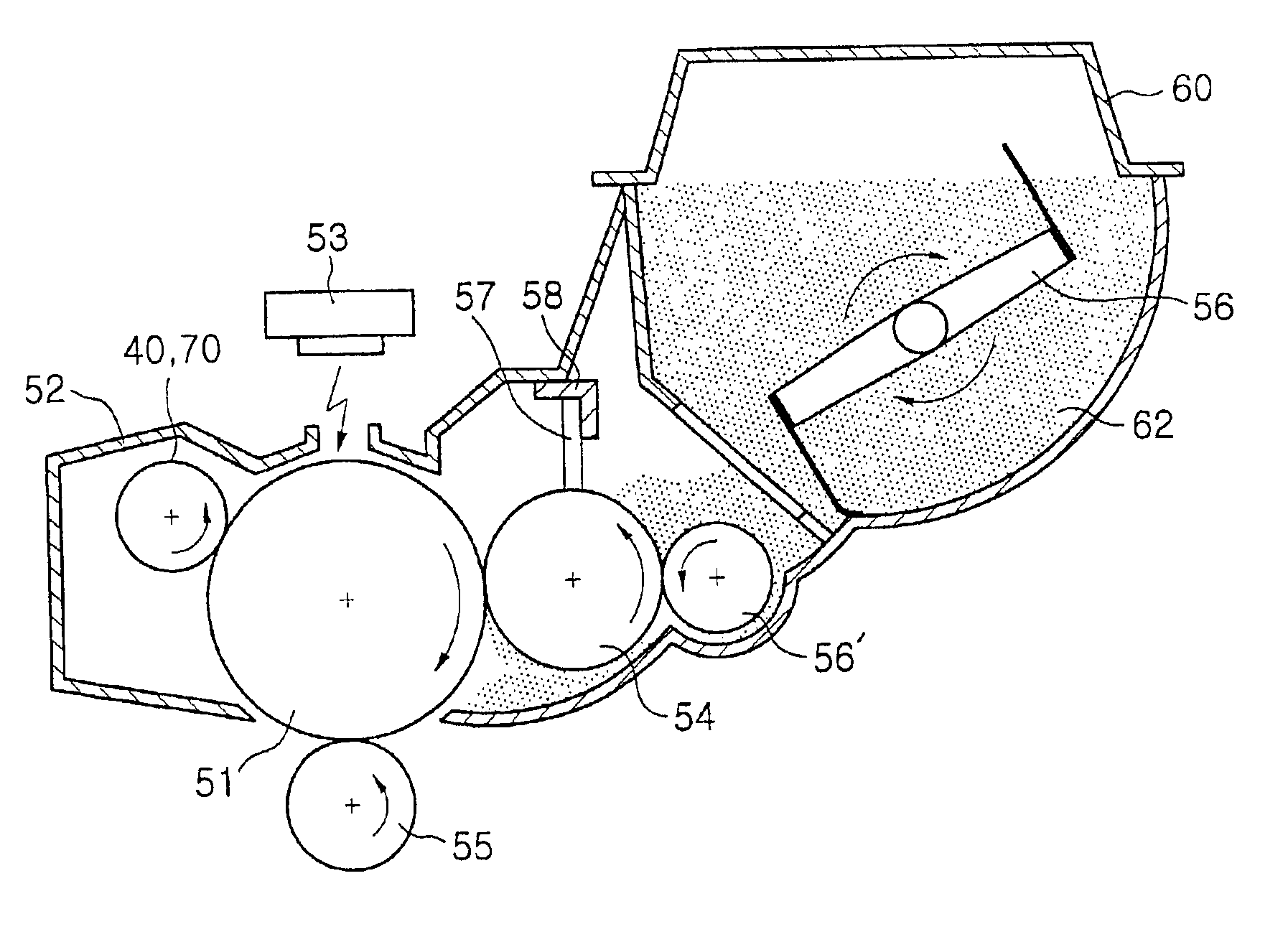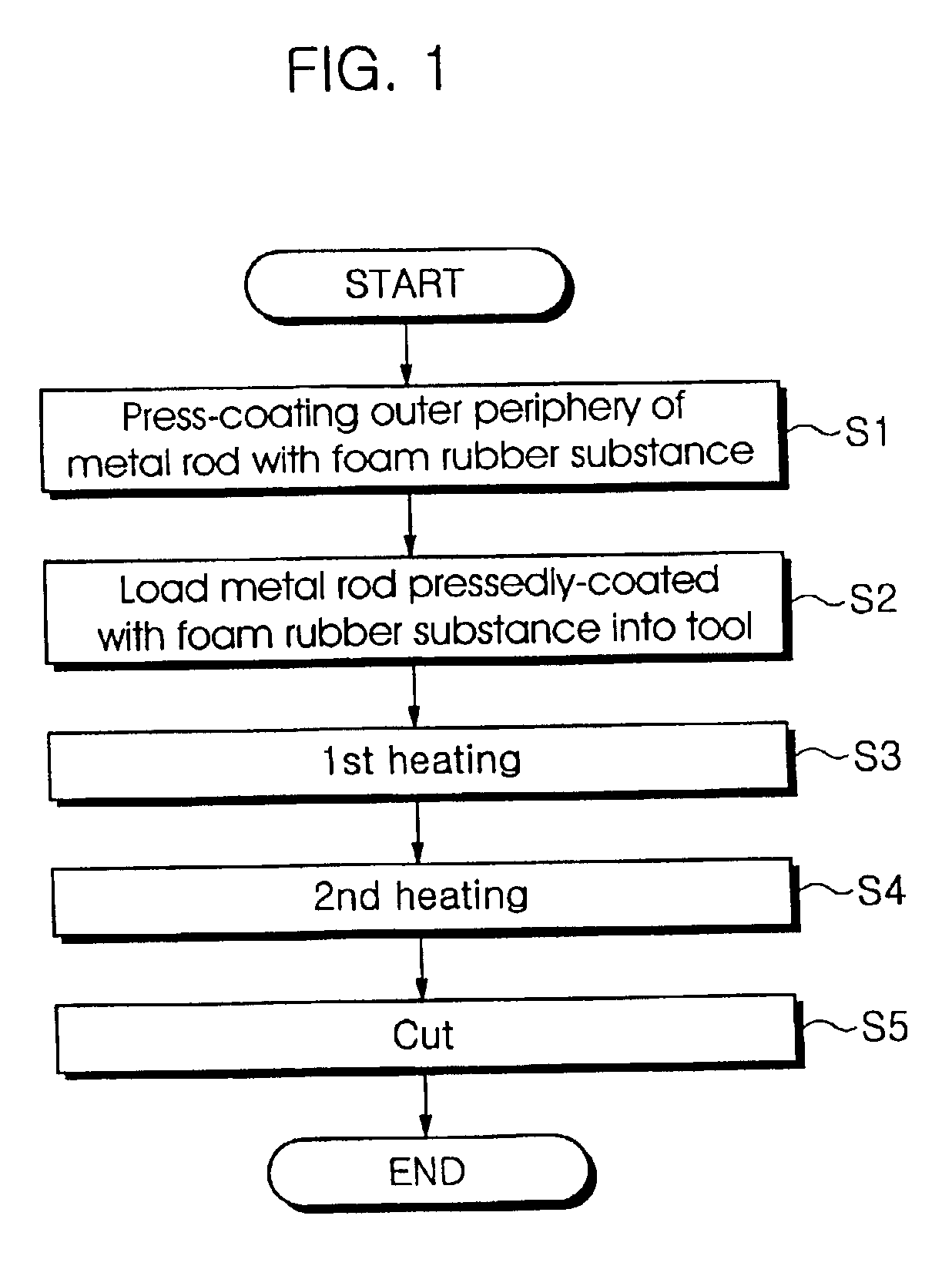Charge roller of developing device for image forming apparatus
a technology of developing device and charge roller, which is applied in the direction of corona discharge, instruments, applications, etc., can solve the problems of serious environmental pollution, excessive high voltage required for charging the surface of the photosensitive drum, and difficulty in producing an excellent quality charge roller, so as to reduce the size of the charge roller, enhance the quality of printing image, and minimize the durability of the resilient rubber
- Summary
- Abstract
- Description
- Claims
- Application Information
AI Technical Summary
Benefits of technology
Problems solved by technology
Method used
Image
Examples
Embodiment Construction
[0056]Referring to FIG. 1, a process of pressedly-coating an outer periphery of a metal rod with a foam rubber substance is performed (S1). In this case, as shown in FIG. 2a, a foam rubber substance 1 at a sheet phase is injected through a foam rubber substance inlet 12 of a compression molding machine 100, and a metal rod 2 having a predetermined diameter is inserted through a metal rod inlet 21.
[0057]Here, the foam rubber substance 1 injected through the inlet 12 is well mixed by a rotation of a mixing shaft 14 and pushed toward a cavity 20. Here, a plurality of heater coils 16 are disposed at a lower portion of the compression molding machine 100. The heater coils 16 serve to heat and melt down the mixed foam rubber substance 1.
[0058]When the metal rod 2 inserted through the metal rod inlet 21 reaches inside of the cavity 20, the melted foam rubber substance 1 pushed toward the cavity 20 is rapidly adhered to an outer periphery of the metal rod 2. Thus, the metal rod 2 extracted ...
PUM
| Property | Measurement | Unit |
|---|---|---|
| volume resistivity | aaaaa | aaaaa |
| volume resistivity | aaaaa | aaaaa |
| temperature | aaaaa | aaaaa |
Abstract
Description
Claims
Application Information
 Login to View More
Login to View More - R&D
- Intellectual Property
- Life Sciences
- Materials
- Tech Scout
- Unparalleled Data Quality
- Higher Quality Content
- 60% Fewer Hallucinations
Browse by: Latest US Patents, China's latest patents, Technical Efficacy Thesaurus, Application Domain, Technology Topic, Popular Technical Reports.
© 2025 PatSnap. All rights reserved.Legal|Privacy policy|Modern Slavery Act Transparency Statement|Sitemap|About US| Contact US: help@patsnap.com



